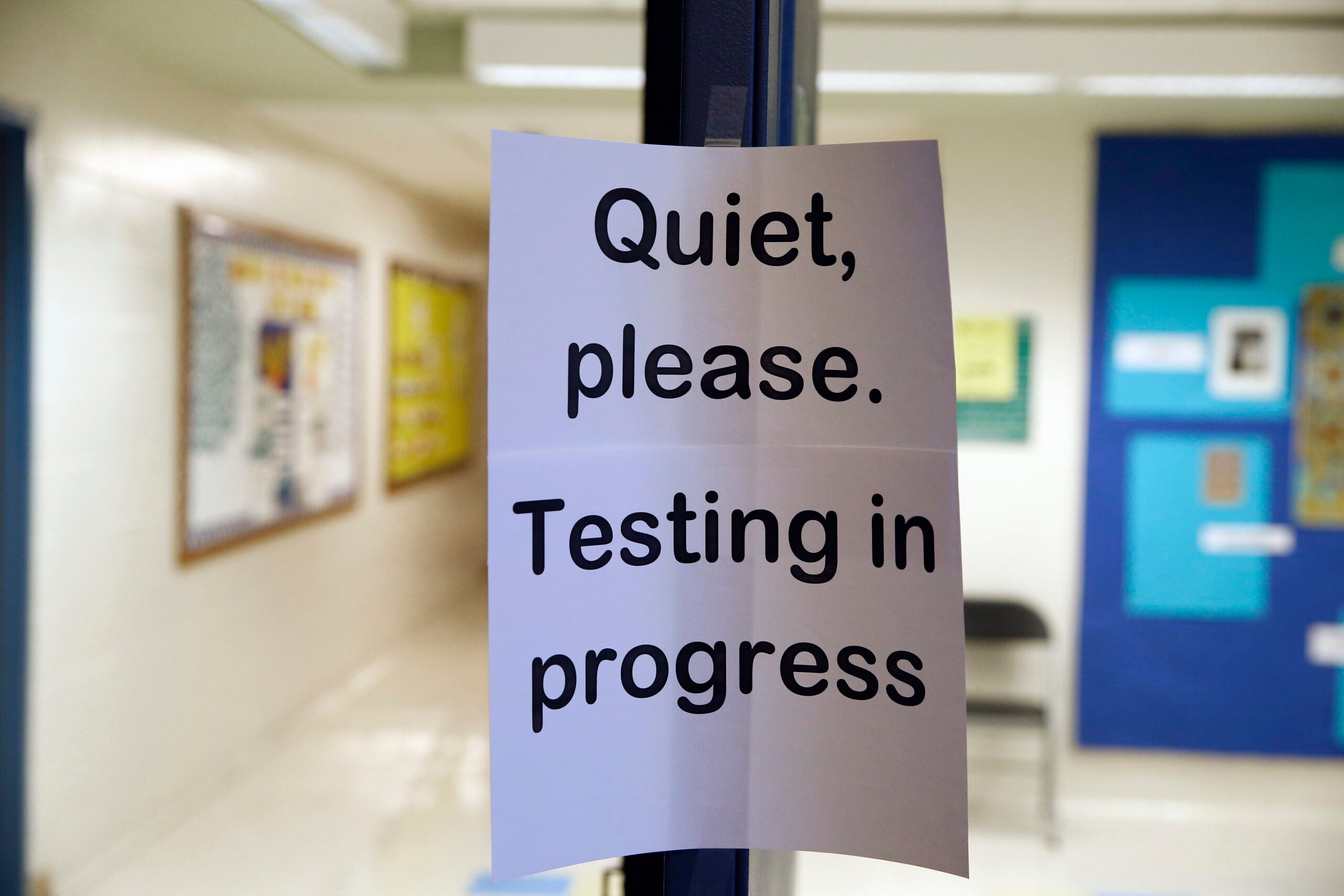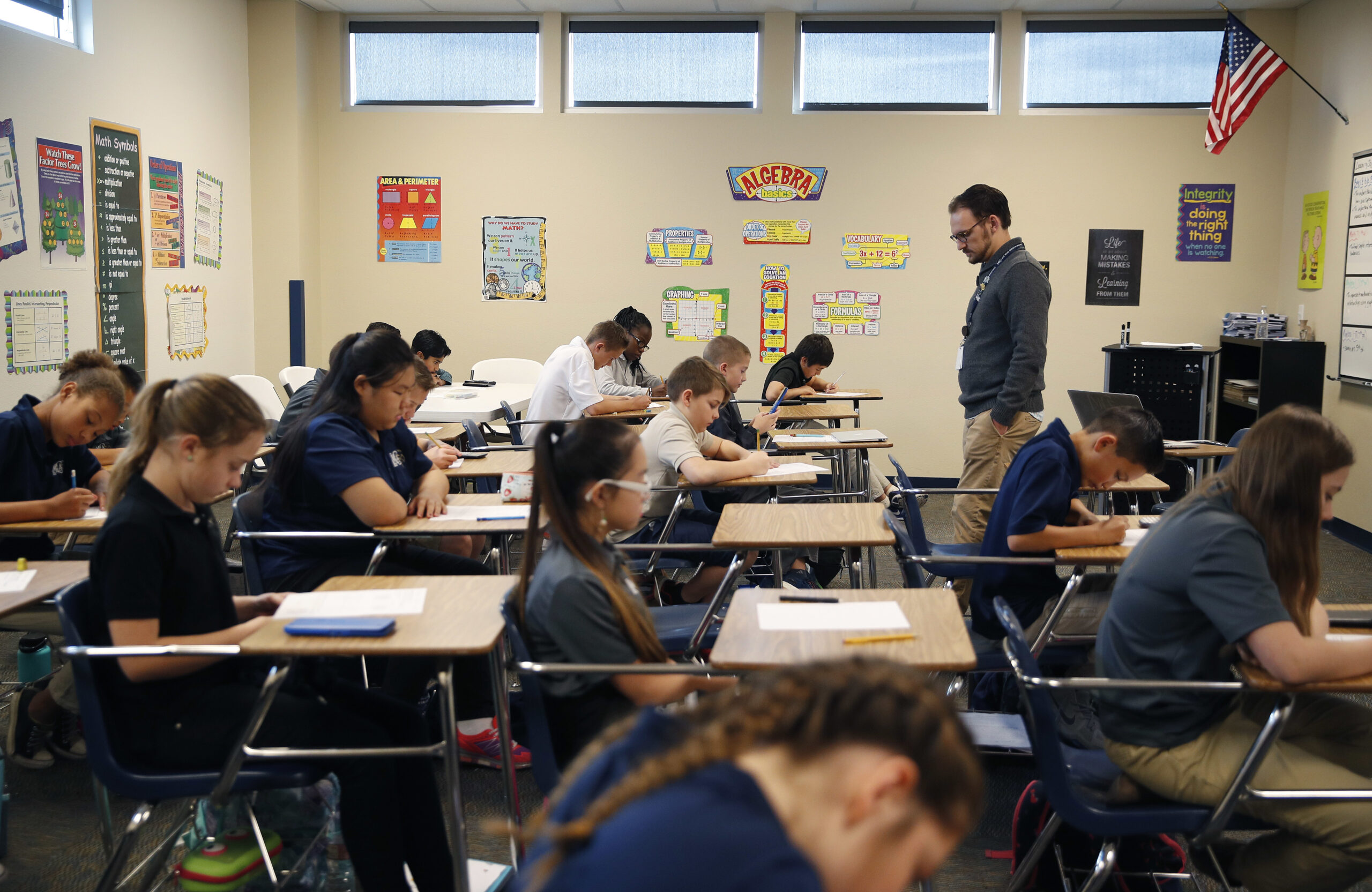The percentage of Wisconsin students who are proficient or advanced in math and English went down significantly this year, according to state standardized test data released Wednesday. English language arts proficiency dropped 7 percentage points from 2019, and math dropped 9 percentage points.
When Wisconsin administered state standardized tests to students last spring, only 84 percent participated in English language arts exams and 85 percent in math exams. Because the statewide math and English proficiency rates calculated out of those exams are based on the total number of students enrolled, not the number of students who actually took the exams, the state Department of Public Instruction warns that lower participation rates may be part of the reason scores were down.
“There is no doubt that there is some unfinished learning, to be completed and moved on from as we maybe, perhaps exit the pandemic, and other things that have happened over the last year,” said Barb Novak, DPI’s literacy consultant.
News with a little more humanity
WPR’s “Wisconsin Today” newsletter keeps you connected to the state you love without feeling overwhelmed. No paywall. No agenda. No corporate filter.
According to Wisconsin Student Assessment System data from the exams taken last school year, 32 percent of Wisconsin students were proficient in English language arts and 31 percent were proficient in math, down from 39.3 percent in English language arts and 40.1 percent in math in 2019. Because of the statewide school closures in the spring of 2020, when tests are administered, the only testing data from last year is from the ACT taken by 11th graders. DPI requested, but didn’t receive, a waiver from the U.S. Department of Education to exempt all students from statewide testing in spring 2021.
For 11th graders, math proficiency scores dropped from 32.5 percent last year to 25.5 percent this year, and English from 36.8 percent last year to 33 percent this year.
“As always, these assessments provide one data point, and districts have additional data points with local assessments and course grades and other things, and that draws a more complete picture,” said Phil Olsen, DPI assistant director of assessment. “In districts where test participation is lower than we’d like to make valid inferences from the test results, then you have to rely more on these other data points to draw the picture.”
Ordinarily, the test results are used to help identify students for targeted and comprehensive support and improvement assistance, under the federal Every Student Succeeds Act and the Individuals with Disabilities Education Act. Because of pandemic disruptions, Wisconsin schools have a waiver that will let them skip that process this year, and simply continue with the same students who have previously been identified for those supports.
“During a school year of unprecedented challenges, and in the middle of a once-in-a-lifetime pandemic, our educators and students persevered,” said state Superintendent Jill Underly in a press release about the testing data. “Participation and proficiency rates look different than other years, and that is not surprising considering the extraordinary circumstances and challenges faced everywhere in our state, including schools and districts. Make no mistake, students learned many lessons this year — in resilience, time management, technology and problem solving — that may not be reflected in a standardized assessment, and we continue to have work to do to ensure our students are growing, learning, and feel safe and supported at school.”
This year’s report includes test results from the Forward Exam, taken by students in third through eighth grade and 10th grade. Two versions of the ACT, a national college admission test, taken by students in grades nine through 11, and Dynamic Learning Maps administered to students with cognitive disabilities across all grades. The scores play a major role in compiling school district report cards.
In Wisconsin’s parental choice programs, 75 percent of students took the English language arts exams last spring, and 76 percent took math exams. The percentage of students who scored as proficient or advanced in English language arts was 18 percent across all choice programs, and 13.7 percent in math.
Wisconsin Public Radio, © Copyright 2025, Board of Regents of the University of Wisconsin System and Wisconsin Educational Communications Board.






